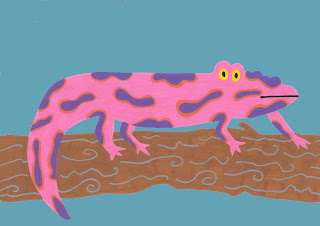Storyboard
I came up with the idea of creating a children's book as awareness to how people are damaging nature but it always fights back and makes life out of what is broken. I created the storyboard unsure of the idea that I had because of the amount of text that would need to be involved in creating the work.
I am still undecided on what materials I would like to use to create the final book making it even more difficult to manage my idea.
I liked the use of minimal colour in my storyboard which I would like to continue through into my final design as well as the tree on each page going horizontally across each page.
Tutorial with Jamie
After showing Jamie my work up to date he gave me the idea of creating a typology style book full of the different creatures and plants/fungi that can be seen in the woodlands making life out of the dead trees.
My current storyboard contains too much irrelevant text and I'd personally prefer to create more of a factual picture book.
Together we looked at codex seraphinianus which is an encyclopaedia of 300 pages with imaginary content such as plants and people. This work seemed more appealing to me as I enjoy creating character sheets without looking at images for reference.
This work inspired me to create exhaustive drawings of the same plants and creatures to the point where I didn't need to use a reference making it more unique with a slight hint of my own imagination.
Drawing on larger sheets allowed me to develop my drawings further and experiment with altering each area of the object.
I am still unsure which medium to use for my final piece.
I want to make the drawings bright but which method is best to create this?
Using normal felt tips didn't work for colouring in the the designs because it left marks and it is unclear where the different patterns are on the creatures and plants.
POSCA pens saved my life.
I have recently started using these pens and weren't completely sure how well they would work until I discovered that you can overlap almost any colour with them. This allowed me to not have to use an outline to create the patterns.
I took inspiration from Stephanie Unger who also uses POSCA pens to create a large amount of her work.
Would these pens work well when scanned onto Photoshop and Indesign?
I added the coloured background to the work to make the book look slightly more interesting to the reader.
However I wish I had created my own background rather than just a solid colour such as making my own textures or photoshopping my own photographs that I took of the woods. But I became too limited with time meaning I just kept it simple.
If I were to create the book again I would add a photographed background rather than a plain one to make it more interesting and personal to me.
Indesign
I disliked using Indesign when I first started to add and alter the individual pages of my book. The pages were printing out at the wrong scale and I couldn't work out why. Although after a while I managed to print it properly ready to be stapled. I made measurements of where the tree would be placed across the page in the same place across the book.
This would have worked well with a concertina style book however again I began to struggle with time.









No comments:
Post a Comment